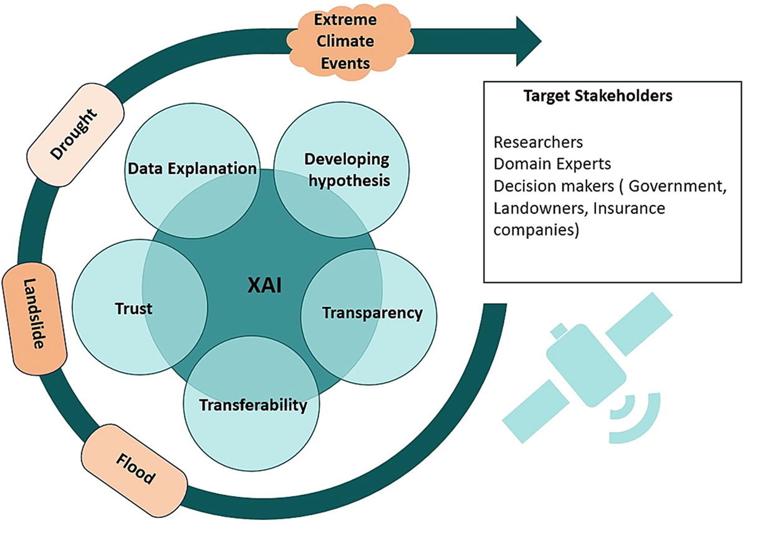The application of Artificial Intelligence in various fields has witnessed tremendous progress in the recent years. The field of geosciences and natural hazard modelling has also benefitted immensely from the introduction of novel algorithms, the availability of large quantities of data, and the increase in computational capacity. The enhancement in algorithms can be largely attributed to the elevated complexity of the network architecture and the heightened level of abstraction found in the network's later layers. As a result, AI models lack transparency and accountability, often being dubbed as “black box” models.
Explainable AI (XAI) is emerging as a solution to make AI models more transparent, especially in domains where transparency is essential. Much discussion surrounds the use of XAI for diverse purposes, as researchers explore its applications across various domains. With the growing body of research papers on XAI case studies, it has become increasingly important to address existing gaps in the literature. The current literature lacks a comprehensive understanding of the capabilities, limitations, and practical implications of XAI. This study provides a comprehensive overview of what constitutes XAI, how it is being used and potential applications in hydrometeorological natural hazards. It aims to serve as a useful reference for researchers, practitioners, and stakeholders who are currently using or intending to adopt XAI, thereby contributing to the advancements for wider acceptance of XAI in the future.

The article from Geoscience Frontiers, titled "Future Research Directions for XAI in Climate-Induced Hydrometeorological Natural Hazards" presents an in-depth exploration of how Explainable Artificial Intelligence (XAI) can enhance understanding and management of climate-related natural hazards. Authored by Abhirup Dikshit and others, the paper delves into the limitations of traditional machine learning models and the emerging role of XAI in integrating these models with decision support systems for better management during hazardous events.
Key highlights from the article include the emphasis on real-time explainability in AI predictions, the importance of human-AI collaboration, and the identification of critical variables that could predict sudden shifts in weather patterns like precipitation. The research pinpoints the 'black box' nature of traditional AI as a significant hurdle in operational settings, where understanding the basis of AI decisions is crucial for trust and reliability.
The article also discusses various case applications of XAI in tackling the complexities of natural hazards, underscoring the shift from purely predictive models to those capable of providing causal insights. Such advancements are crucial for enhancing decision-making processes during events such as floods, droughts, and landslides, which are becoming increasingly frequent and severe due to climate change.
Furthermore, the paper outlines several research directions necessary for advancing XAI in this field. These include deeper integration of XAI into real-time systems for hazard response, development of interfaces that improve interactions between AI systems and human experts, and explorations into causation within AI models to illuminate complex relationships between various climatic factors.
In terms of contributions, the article notes significant input from multiple authors in various capacities, ranging from investigation, data curation, and writing to conceptualization and supervision, highlighting a collaborative effort to push the boundaries of current knowledge on XAI applications in environmental sciences.
This paper contributes significantly to the discourse on improving the interpretability of AI models in environmental science, particularly in the context of increasing hydrometeorological threats posed by climate change. It is a call to action for researchers to address these challenges through innovative approaches in XAI, paving the way for more robust and understandable AI systems that can better serve humanity in facing natural hazards.
Sources:
Geoscience Frontiers
https://www.sciencedirect.com/science/article/pii/S1674987124000392 .
Provided by the IKCEST Disaster Risk Reduction Knowledge Service System
Comment list ( 0 )
